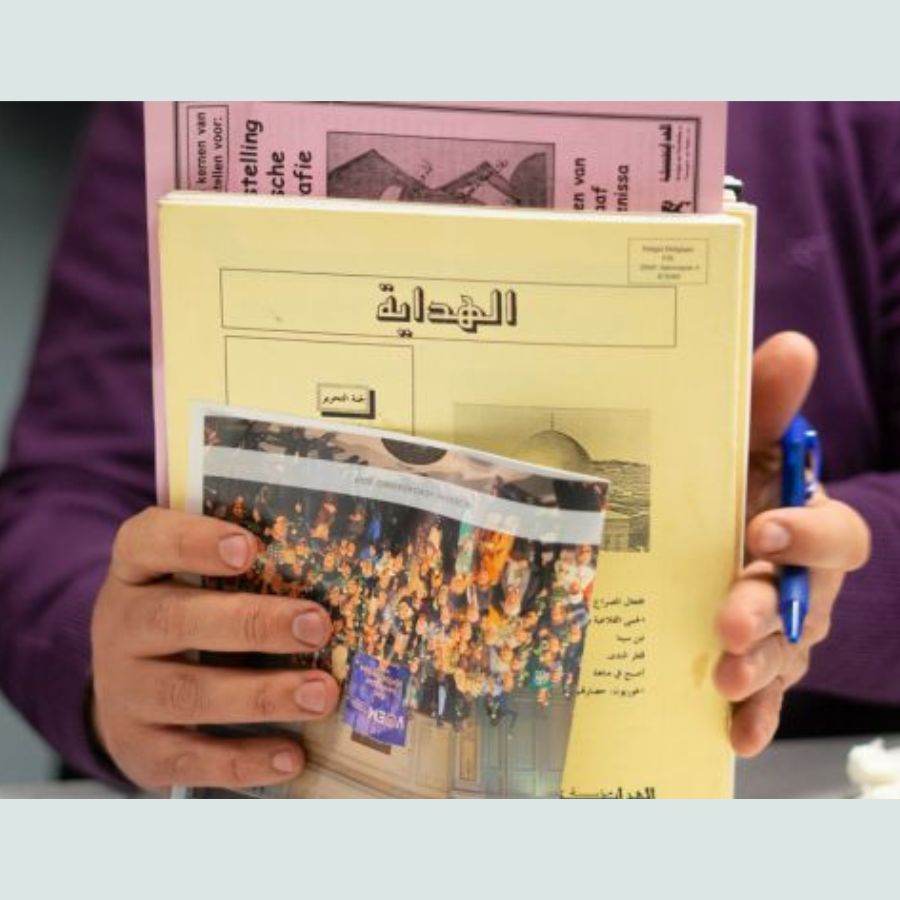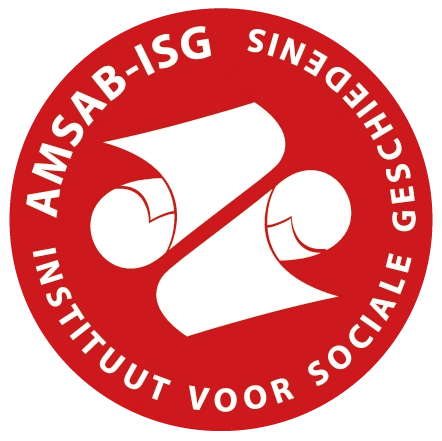Voem vzw
Voem ontstond in 1989 als de Vereniging voor Islamleerkrachten in Vlaanderen (VILV), met als oorspronkelijke missie het islamonderwijs in België officieel erkend te krijgen. Al snel groeide de organisatie uit tot een spil in de bredere interculturele dialoog tussen de Belgische samenleving en de verschillende moslimgemeenschappen.
Vandaag is Voem nog steeds een toonaangevende speler in het sociaal-culturele landschap van Vlaanderen. De organisatie blijft geïnspireerd door de islamitische wereld, maar focust niet langer alleen op interreligieuze dialoog. In plaats daarvan stimuleert Voem jonge makers die hun cultureel erfgoed vermengen met moderne expressievormen, zoals graffiti gebaseerd op kalligrafie of elektronische muziek verweven met traditionele Arabische klanken.
Van archiefbeheer naar Digidaar
Rond 2018 benaderde Voem Amsab-ISG met de vraag om hun erfgoed in bewaring te nemen. Dit leidde tot de inventarisering van de veelzijdige collectie van Voem, die ruim dertig jaar aan politiek en cultureel engagement weerspiegelt. Historica Tina De Gendt bracht die geschiedenis ook tot leven in een boek dat de rol van Voem binnen het bredere migrantenmiddenveld in België belicht.
Tijdens de coronaperiode verhuisde Voem zijn werking naar DiverzCity, een virtuele ontmoetingsplek. Daar rijpte het idee om ook hun erfgoed digitaal te ontsluiten. Zo werd het plan voor Digidaar geboren: een virtueel archief en museum waar bezoekers de collectie op een dynamische manier kunnen ontdekken.
Een participatief traject
Voor de uitbouw van Digidaar gingen we in gesprek met zowel de oprichters als de jongere generatie binnen Voem. In een participatief traject, dat zich over meerdere maanden uitstrekte, onderzochten we hoe de erfgoedgemeenschap zelf deze ruimte wilde vormgeven. We vertrokken vanuit het bestaande archief bij Amsab-ISG, maar gingen ook samen op zoek naar nieuwe stukken – vaak nog te vinden in het oude kantoor van Voem.
Digitalisering en thematische keuzes
Om de collectie in Digidaar te kunnen tonen, moest het papieren archief eerst gedigitaliseerd worden. Dat gebeurde tot nu toe met ongeveer 130 archiefstukken, goed voor zo’n 9.000 pagina’s. Het gaat vooral om administratieve documenten zoals jaarverslagen, subsidiedossiers en materiaal over de Emancipatieprijs, maar ook om publicaties van Voem, zoals brochures, nieuwsbrieven en tijdschriften, en interne dossiers over specifieke projecten.
Bij het selecteren van de stukken gaven we prioriteit aan thema’s die tijdens het participatieve traject rond Digidaar naar voren kwamen. Zo krijgen poëzie, kalligrafie en andere artistieke vormen die vandaag nog steeds een rol spelen binnen Voem extra aandacht. Tegelijk zetten we in op historisch belangrijke thema’s zoals onderwijs, moslimbegraafplaatsen, het hoofddoekendebat en vredesacties.
De gedigitaliseerde bronnen kan je nu integraal bekijken en doorzoeken dankzij OCR-technologie.
Bekijk de inventaris in de onlinecatalogus
Voortgang van het digitaliseringsproces
Het digitaliseringsproces is nog volop bezig. De grote variatie aan materiaal vraagt om verschillende aanpakken, waardoor bepaalde onderdelen pas later beschikbaar zullen zijn. Zo staat het tijdschrift De Wegwijzer momenteel nog niet online, maar dat volgt in de komende maanden.
Met Digidaar zetten we samen met Voem een belangrijke stap richting een toegankelijk, digitaal en levendig erfgoedplatform dat verleden, heden en toekomst met elkaar verbindt.








